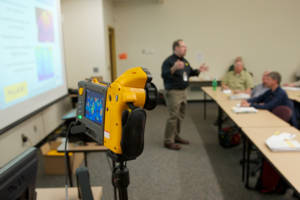Thermography Research
The Index Medicus, a comprehensive index of medical scientific journal articles, references more than 800 per-reviewed breast thermography studies, in which over 250,000 women participated. Many of these studies involved very large groups of patients (from 37,000 to over 100,000) and some have followed patients for as much as 12 years. Among other conclusions, these studies found that when thermography has been added to a woman’s regular breast health checkups, a 61% increased survival rate was realized, and when used as part of a multi-model approach (clinical examination, mammography and thermography) 95% of early stage cancers will be detected. It is well known that early detection is the best defense against breast cancer and that, if treated in the earliest stages, a 95% cure rate is achieved. The “cure” is early detection.
The Cornell Study, 2008
American Journal of Surgery, 2008. American Society of Breast Surgeons, Cornell.
The single best article on breast thermography showing a remarkable 97% effectiveness in identifying malignant cancer. RESULTS: Sixty of 94 biopsies were malignant and 34 were benign. DITI identified 58 of 60 malignancies, with 97% sensitivity, 44% specificity, and 82% negative predictive value depending on the mode used. Compared to an overall risk score of 0, a score of 3 or greater was significantly more likely to be associated with malignancy.
Modern Thermography Interpretation
 Drs. Piana and Sepper published an article entitled The Contemporary Evaluation of Thermal Breast Screening. This article explains much about the modern use of thermography for breast cancer detetction.
Drs. Piana and Sepper published an article entitled The Contemporary Evaluation of Thermal Breast Screening. This article explains much about the modern use of thermography for breast cancer detetction.
Abstract — Breast thermography science has a long history with many splintered methods of interpretation. This article creates a modern approach based on modern equipment for analysis. We recommend abandoning old methods that utilize risk factor ratings, and utilize descriptive analysis….
